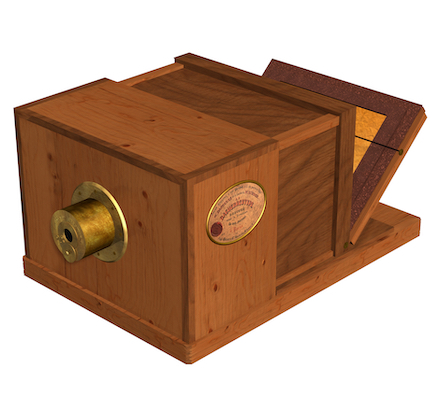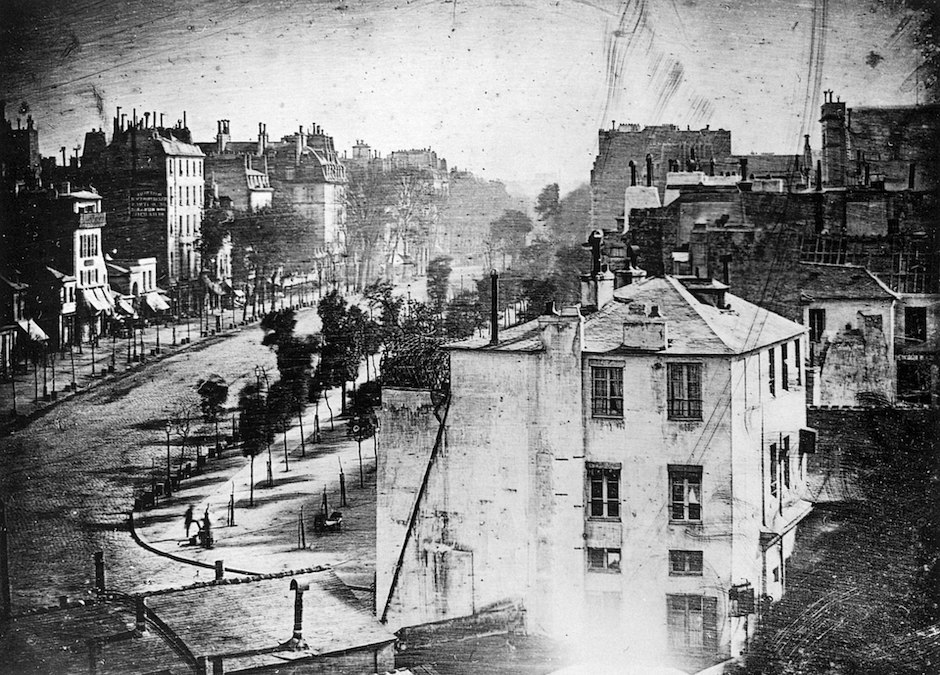News + Features
The history of photography is a long and storied one, built by both scientists and artists across multiple continents and cultures. While photography is only a few hundred years old, the first concepts that later led to the development of the camera go back thousands of years. The first attempts to preserve an image happened in the 1830s, when multiple scientists and artists started experimenting with preserving images, unbeknownst to each other.
The modern camera is made possible by hundreds of notable discoveries—here are just ten of the key moments in the history of photography we wanted to highlight.

How the camera evolved. www.photographyhistoryfacts.com

1. The Camera Obscura. The pre-cursor to the camera was actually a room with a hole in the wall. The hole projected an upside-down image on the opposite wall. This concept, called the camera obscura, did not preserve the image, nor did it require a lens. But, this concept dates back thousands of years. The camera obscura is thought to be recognized by more than one culture more than 2000 years ago, including Aristotle and the Greeks as well as the Chinese. In 1814, Joseph Nicéphore Niépce created the first photographic image using a camera obscura; the image required eight hours of light exposure and later faded.
[Read: Key Moments in the History of The Selfie]
2. The first light-sensitive materials. While the camera wasn’t around in the 1700s, the first light-sensitive materials necessary to preserve an image were. Silver salts, originally thought to be activated by heat, were proven to be sensitive to light when Johann Heinrich Schulze used sunlight to write words with them in 1727.
3. The first sun drawings. The first time that light-sensitive materials were used in art was actually to copy a drawing, not preserve an image. In 1822, Nicéphore Niépce created the heliograph, or sun drawing, and used the process to copy engravings. In 1826 or 1827, Niépce created the “first photograph”, titled “View from the Window at Les Gras.” It is a heliographic image and the oldest surviving camera photograph.
4. The term photography is first used. The first person believed to call to process of recording an image as “photography” was Hercules Florence. He actually worked with silver salts to produce copies of drawings in 1833 but his work wasn’t widely shared. In fact, his contribution wasn’t recognized until photography was well past its infancy in 1973.

5. The Daguerreotype. Considered the first form of photography, in 1837 the first Daguerreotype was made by Louis-Jacques-Mandé Daguerre, a painter who previously made sketches with the camera obscura and worked with Niépce. The images were captured on iodized silver plates and developed with mercury. While Daguerre first captured an image in 1835, the images were not permanent until he discovered that he could remove the remainder of the silver iodide using a salt solution two years later. This time the mage was fixed, did not fade and needed under 30 minutes of light exposure.

6. Light sensitive drawings on paper. Naming on person as the founder of photography is difficult to do because so many significant developments occurred in the 1830s. Along with Florence and Daguerre, Henry Fox Talbot created a method for recording images by placing paper in a salt then silver nitrate solution to make the material light sensitive. He first created the technique in 1835 but it wasn’t until 1839 that he was able to make the image more permanent using a suggestion by Sir John Herschel. Talbot’s key contribution to photography is that this process is a negative, which allowed multiple prints to be made, unlike a daguerreotype.
7. Experimenting with different materials. In the mid-1800s, several additional photographic processes were developed that fixed an image onto different materials. During this pivotal time in photography, processes for the wet plate, calotype, tin types, glass plates, and ambrotypes were created.
8. Ditching the portable darkroom. Up until the late 1870s, taking a photo required bringing the darkroom with you and developing the image on site. That changed with the dry plate, a technique developed by several photographers including Charles Bennett. These images did not need to be developed immediately.
9. The development of film. Prior to film, taking a photograph required considerable skill and know how. George Eastman developed rolled film in 1889. He later invented the Brownie—a pre-loaded camera that allowed amateurs to take photos, then ship the camera back to Kodak for development. Another key to making photography widely accessible was instant film, invented by Edwin Herbert land in the late 1940s.
10. Photography goes digital. While digital didn’t outsell film cameras until the early 2000s, the first digital still camera was created in 1975 by Kodak.





